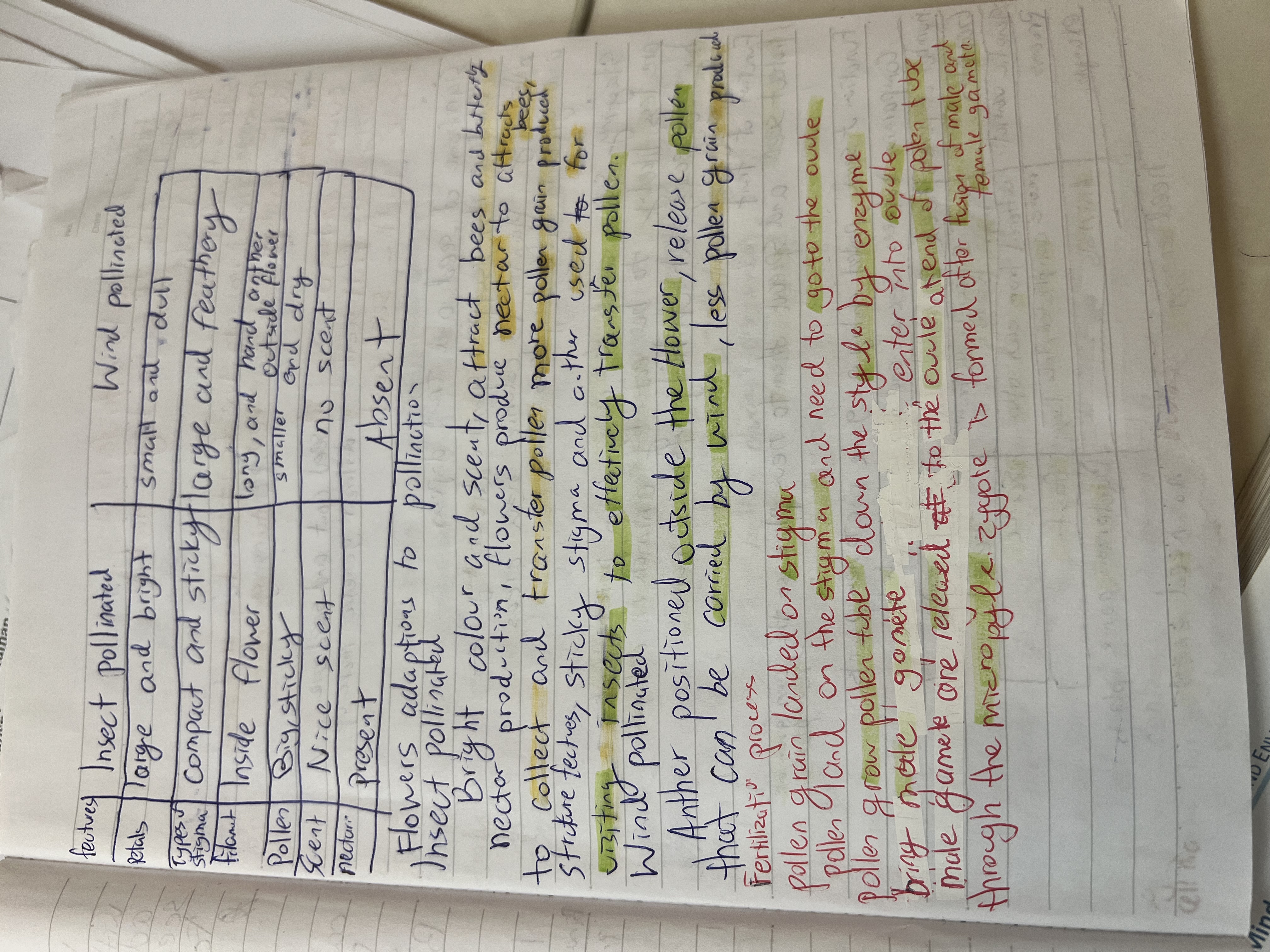Reproduction in plants and parts
1/13
There's no tags or description
Looks like no tags are added yet.
Name | Mastery | Learn | Test | Matching | Spaced |
|---|
No study sessions yet.
14 Terms
Structure of flower
Male have stamen which consists anther for production of pollen
Petal attract insects for pollination
Fly to another flower to give pollen to female part of flower at stigma (receive pollen grain)
Which connect to ovary (contain copies) via the style (support stigma)

Types of pollination (transfer of pollen grain from male (anther) to female(stigma
Self pollination pollen grain are transferred to stigma of same flower or another flower on same plant
Adv ensure reproduction in bad environment
Dis less genetic variation
Cross pollination
Pollen grain transfer to stigma of another plant
Adv more genetic variation
Dis Can have undesirable traits

Insect pollination and wind pollination difference
Large and bright — small and dull
Sticky stigma—large stigma
Filament inside flower—-long and outside floweR
Nice scent——no scent
Nectar(attract insects) is present ——not present

Fate of plants after fertilisation
Sepal and petal stamen fall off
Ovary transform into fruit which protect seed
Ovule develop into seed contain genetic material
Ovum embryo
Ovary wall-Fruit wall
Ovule wall -seed coat

Seed germination
Seed contain cotyledon(food reserve,embryo ,plumule(embryo future shoot ,radicle (embryo future root and seed coat protect embryo

Growth at root tips
Region of cell division (cell divide by mitotic cell division
Region of elongation (cell grow and increase in size by uptake of water)
Region of differentiation (cell being to get shape )

Adv and disadvantages of measuring fresh mass and dry mass
Easy and quick
Organism stay alive ——accurate
Great variations will be resulted change in environment conditions or behaviour (food water content)——time consuming organism will die
